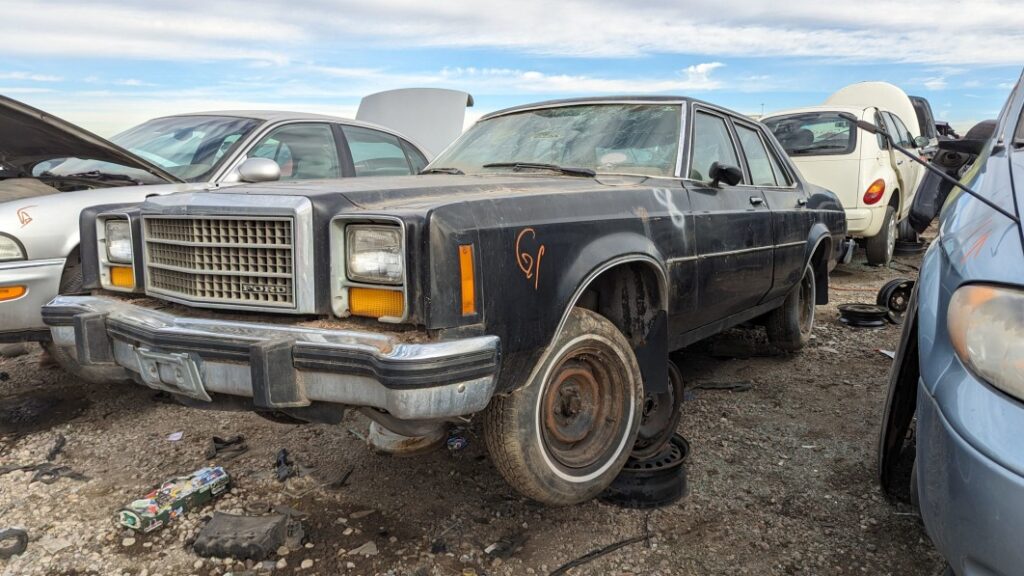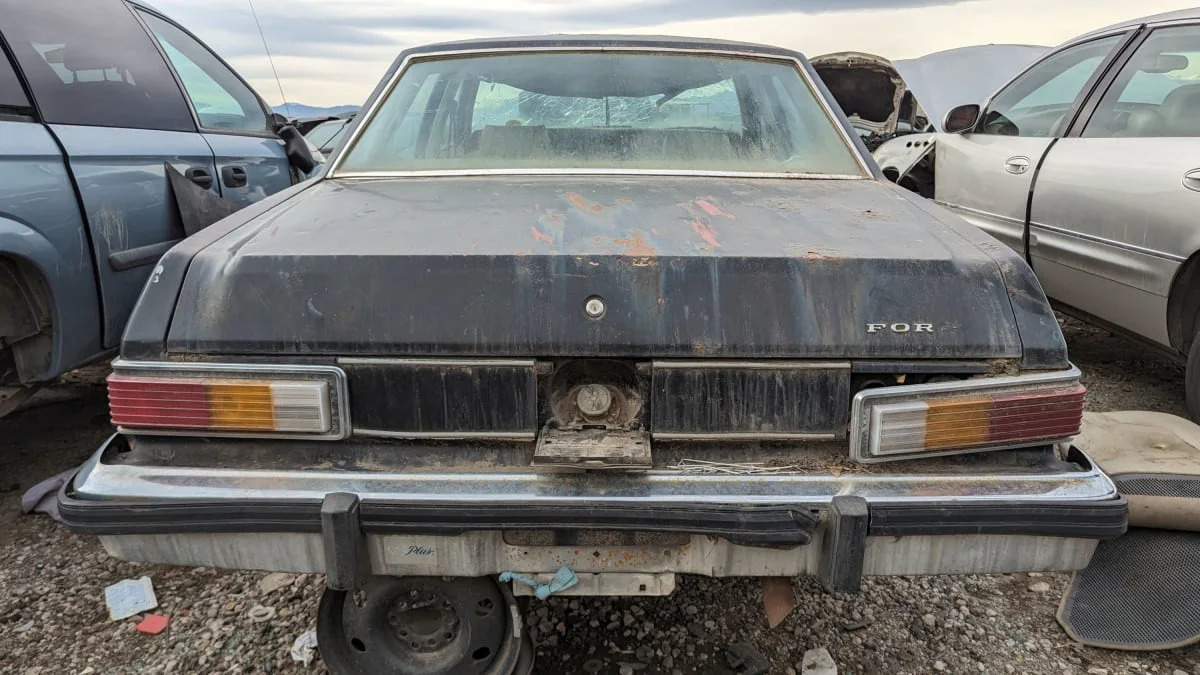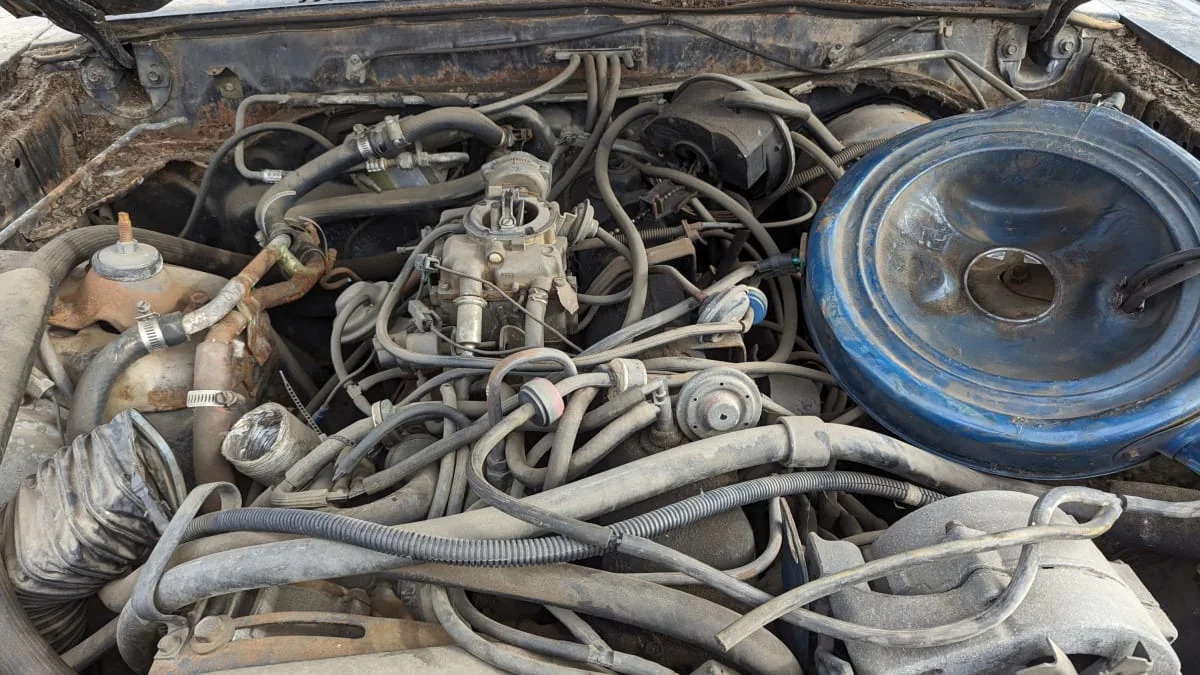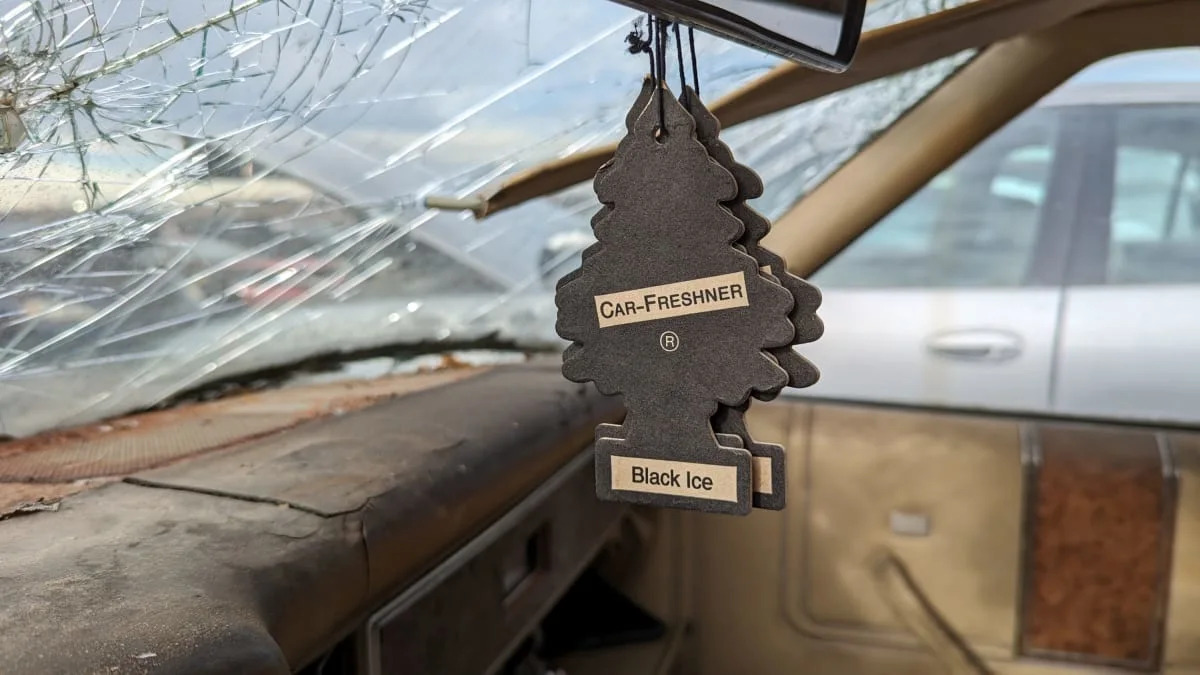Junkyard Gem: 1980 Ford Granada 4-Door Sedan

When the Ford Motor Company’s Robert McNamara axed the Edsel and shifted Ford resources into the new Falcon compact (a few years before becoming the architect of the Vietnam War as secretary of defense), he had no way of knowing just how much of a money-printer the new car’s chassis design would prove for his employer. The original 1960 Falcon itself stayed in production in Argentina through 1991, and in North America it begat vehicles including the Mustang, Cougar, Fairlane, Ranchero, Maverick, Frontenac and Versailles. The last vehicles sold in the USA using versions of the ’60 Comet’s platform (full unibody, coil-atop-upper-control-arm front suspension and leaf springs out back) were the 1980 Ford Granada and its Mercury and Lincoln siblings, and I’ve found one of those now-rare cars in a Denver self-service boneyard.
Ford began using the Granada name on the other side of the Atlantic for the 1972 model year, when it started production of the successor to the Zephyr in Dagenham and Cologne. Car shoppers in the ancient city of Granada, Spain, were thus able to buy the car named after their home (though SEATs were a lot cheaper there during the Franco era).

In 1970s Detroit (and Kenosha), the tradition of naming U.S.-market cars after European locations was getting ever-stronger. Calais, Barcelona, Capri, Monaco, Biarritz, Seville, Torino, Monte Carlo, Monza and Córdoba and many others were honored in this way. The 1980 Granada was available as a version with a special Spain-Italy combined designation: the Granada Ghia, thanks to Ford’s purchase of Carrozzeria Ghia in 1970.

This car is so loaded with luxury and convenience features that I assumed it was a Ghia at first glance, but a look at the build tag showed that it’s an ordinary 4-door Granada sedan with a lot of options.

Thanks to the difficulties of getting a carbureted engine to pass ever-stricter American emission-control regulations in 1980 (this stuff got even worse, a bit later in the decade), the engine compartment is a tangled web of vacuum hoses. There’s a 250-cubic-inch (4.1-liter) pushrod straight-six in there somewhere, rated at 90 horsepower and 194 pound-feet. Windsor pushrod V8s with 255 and 302 cubes of displacement (that’s 4.2 and 5.0 liters for those of you laboring under the cruel lash of the metric system) were available as surprisingly inexpensive options: $38 and $81, or $150 and $320 in today’s dollars.

Keep in mind that American motorists were sitting in long lines at gas stations when this car was in the showroom, thanks to the Iranian Revolution and resulting oil shortage, so a one-barrel 250 seemed like the wise choice at the time.

The base transmission in the 1980 Granada was, believe it or not, a four-on-the-floor manual. I’ve never seen a Granada (or its Mercury-badged twin, the Monarch) with a manual transmission in real life, though, and this car has the three-speed automatic (which cost $340 extra, or $1,342 in 2023 dollars). It also has air conditioning and cruise control (known as “Fingertip Speed Control” in the Fordese of the time), which cost $571 and $129, respectively ($2,254 and $509 after inflation).

The MSRP for the base ’80 Granada sedan before the options started at $5,586, or about $25,113 now. You could get a new 4-door Fairmont, which was based on the more sophisticated Fox Platform, for a mere $4,941 that year (though that was with the 2.3-liter “Pinto” four-cylinder engine).

Ford moved the Granada name over to a car based on the new Fox Platform for the 1981 and 1982 model years, which confused everybody due to its similarity to the Fox-based Fairmont. After that, the Granada name went on Venezuela-market Foxes for a few years, while continuing all the way through 1994 on British-market Scorpios (yes, that Scorpio).

Because the 1975-1980 Granada was a Maverick sedan under the skin, and the Maverick was itself a close cousin to the 1964-1973 Mustang, the front suspension and brake parts from these cars were once in high demand among owners of first-generation Mustangs who wanted to bolt them into their cars. As recently as the middle 1990s, a Granada’s disc-brake setup wouldn’t last more than a day in a junkyard before being grabbed. Those days are long gone, though.

I took my first driver’s test in a 250-powered 1979 Ford Granada sedan, which was the worst motor vehicle my parents ever owned during my childhood (and that’s saying something). Though it suffered constant mechanical problems and was miserable to drive, it was very good at surviving accidents caused by other drivers with good insurance; my parents would take the payout and then I’d glue the thing back together with junkyard parts. It made my family some decent money via that method, after which my mother swapped it for a grille to go onto her MG Midget (which proved to be a more reliable daily driver for her).

This car appears to have been sitting outdoors in the harsh High Plains Colorado weather for at least a couple of decades. It appears that the 1975-1980 Granada’s reputation has been rehabilitated somewhat by now and the car has its enthusiasts, but this one was too rough to get rescued. Next stop: the crusher.

You’ll find one in every car. You’ll see.
Ford ran an advertising campaign comparing the Granada to the Mercedes-Benz models that (allegedly) inspired its design. The two-door was pretty much the same thing as a C107 450 SLC if you squinted a bit, but at a small fraction of the cost.
Meanwhile, the Granada ESS (European Sport Sedan) was nearly impossible to distinguish from the W116 S-Class. Wasn’t it?
In reality, the 1975-1980 Granada was just a nicer-looking Maverick with a very reasonable price tag. Sales topped 100,000 for every model year except 1980 (in which just over 90,000 rolled out of showrooms).



